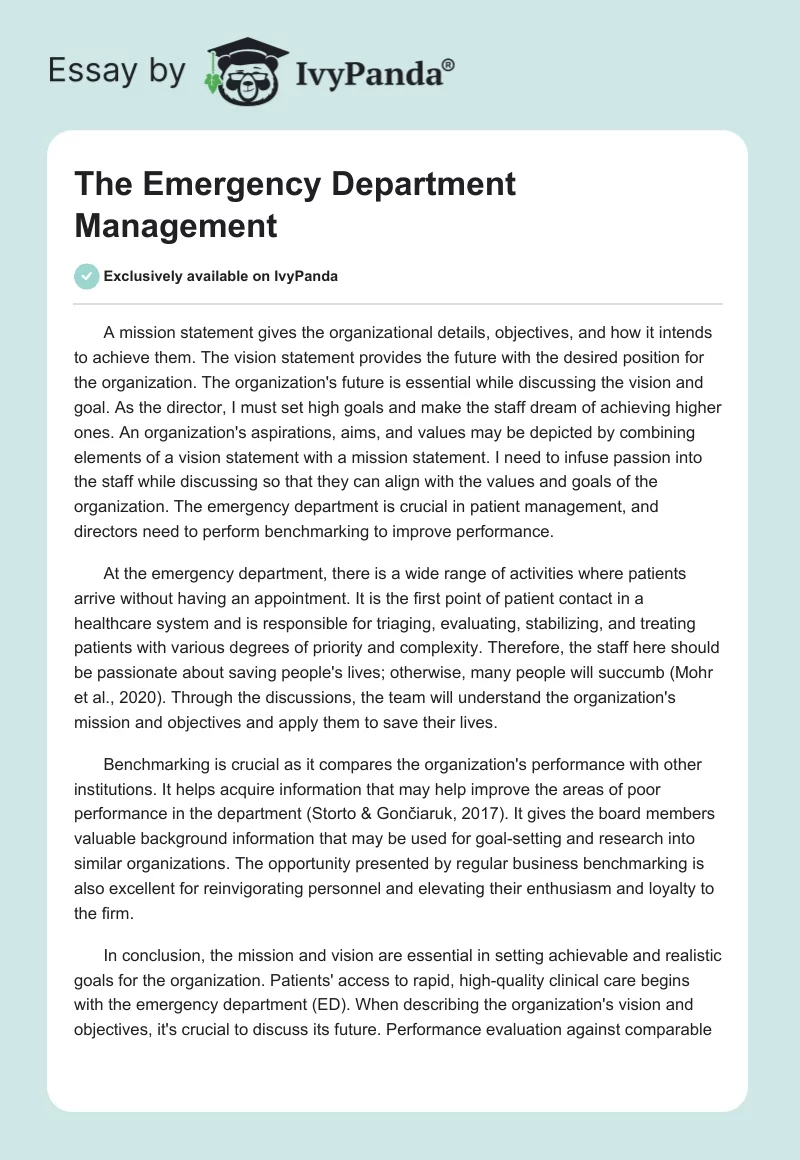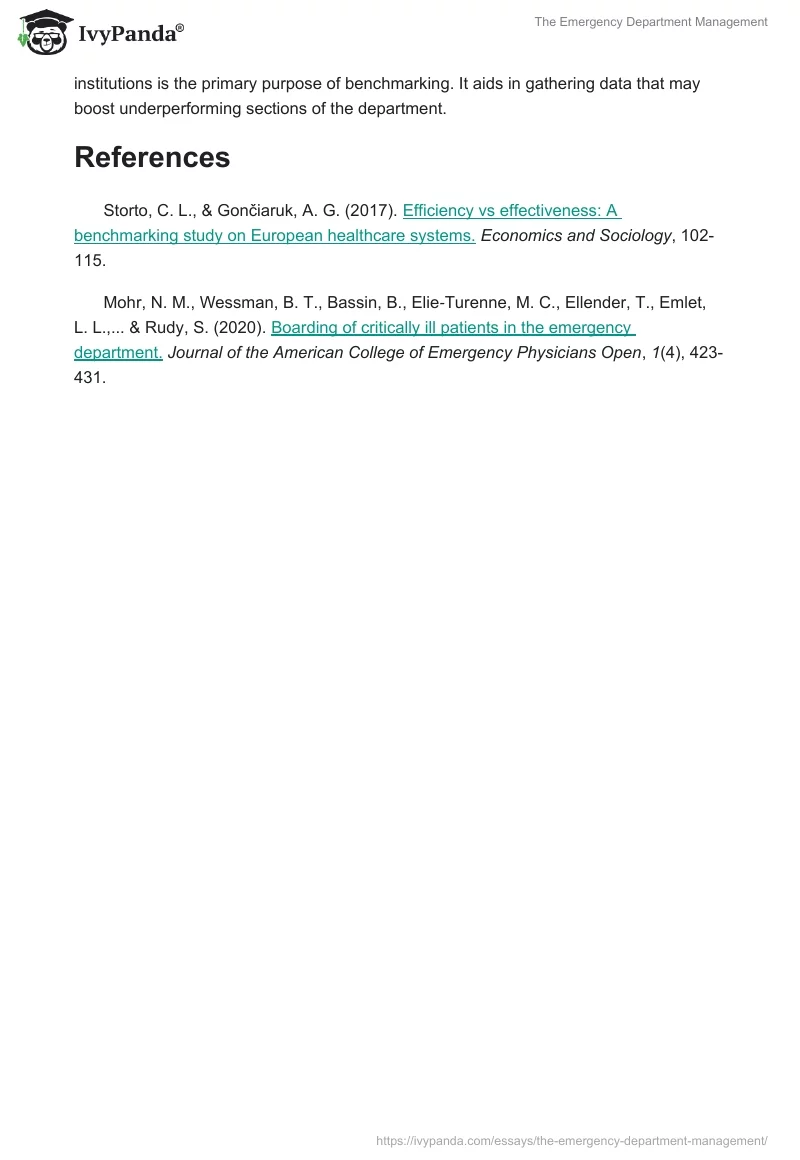A mission statement gives the organizational details, objectives, and how it intends to achieve them. The vision statement provides the future with the desired position for the organization. The organization’s future is essential while discussing the vision and goal. As the director, I must set high goals and make the staff dream of achieving higher ones. An organization’s aspirations, aims, and values may be depicted by combining elements of a vision statement with a mission statement. I need to infuse passion into the staff while discussing so that they can align with the values and goals of the organization. The emergency department is crucial in patient management, and directors need to perform benchmarking to improve performance.
At the emergency department, there is a wide range of activities where patients arrive without having an appointment. It is the first point of patient contact in a healthcare system and is responsible for triaging, evaluating, stabilizing, and treating patients with various degrees of priority and complexity. Therefore, the staff here should be passionate about saving people’s lives; otherwise, many people will succumb (Mohr et al., 2020). Through the discussions, the team will understand the organization’s mission and objectives and apply them to save their lives.
Benchmarking is crucial as it compares the organization’s performance with other institutions. It helps acquire information that may help improve the areas of poor performance in the department (Storto & Gončiaruk, 2017). It gives the board members valuable background information that may be used for goal-setting and research into similar organizations. The opportunity presented by regular business benchmarking is also excellent for reinvigorating personnel and elevating their enthusiasm and loyalty to the firm.
In conclusion, the mission and vision are essential in setting achievable and realistic goals for the organization. Patients’ access to rapid, high-quality clinical care begins with the emergency department (ED). When describing the organization’s vision and objectives, it’s crucial to discuss its future. Performance evaluation against comparable institutions is the primary purpose of benchmarking. It aids in gathering data that may boost underperforming sections of the department.
References
Storto, C. L., & Gončiaruk, A. G. (2017). Efficiency vs effectiveness: A benchmarking study on European healthcare systems.Economics and Sociology, 102-115.
Mohr, N. M., Wessman, B. T., Bassin, B., Elie‐Turenne, M. C., Ellender, T., Emlet, L. L.,… & Rudy, S. (2020). Boarding of critically ill patients in the emergency department.Journal of the American College of Emergency Physicians Open, 1(4), 423-431.


